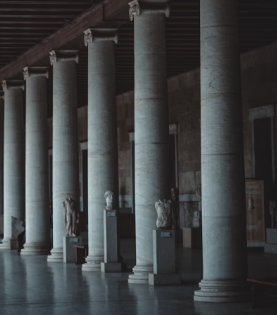
Anyone who read Stoic philosophy knows about “The Painted Porch.” Not THAT painted porch that gave stoicism its name, but Ryan Holiday’s fount of Stoic philosophy and wisdom, a book shop. I haven’t had the opportunity to visit yet, even though I live in Texas, but it’s on my to-do list. Ryan Holiday publishes a newsletter, and I was delighted to see this excerpt appears in it:
The problem with our thoughts is that they’re often wrong—sometimes preposterously so. Epictetus said we had to put our impressions to the test, to really look at them, so they don’t lead us astray or into embarrassment.
People who say “you’ve got another thing coming” are, in fact, demonstrating the need to follow both Epictetus’ advice and the advice of the expression because the proper expression is actually, “you’ve got another think coming.”
All of us could use a second think from time to time. When we think we know something, when we think we’ve understood, that’s when we get into trouble. What we need to do is listen better, ask questions, do a little research, be willing to be corrected. Our mind is not always our friend, as we said recently. We must trust it but always verify. (Source: Ryan Holiday, Daily Stoic Emails).
The Process of Another Think
When I read the highlighted in yellow portion above of Ryan’s words, I am reminded of Melanie Trecek-King’s wonderful writings. Consider these quotes:
- Science is a process designed to correct for our limited perceptions and flawed thinking.
Melanie offers these six questions to find out if what you believe is true:
- How sure are you that the belief is true?
- What is the source of the belief?
- What are your reasons for believing it’s true?
- How could you figure out if it’s true?
- How would you feel if you were wrong?
- What evidence would change your mind?
Scientists, she says, set out to disprove their explanations. The process of systematic disconfirmation is designed to root out confirmation bias. She offers these steps:
- Identify: Determine the theory or belief that needs to be tested.
- Hypothesize: Formulate expectations
- Collect: Gather evidence or data relevant to belief.
- Compare: Contrast evidence against initial expectations.
- Disconfirm: Identify evidence that contradicts or challenges the initial belief or theory.
- Analyze: Examine the disconfirming evidence to understand its implications.
- Adjust: Modify the original belief or theory based on the analysis of disconfirming evidence.
- Repeat: Continue the process iteratively to refine the belief or theory further.
A short time ago, I had fun taking the process Melanie describes above and trying to shorten it for younger learners.
The Best Quote
I suppose one of the reasons I like to read Trecek-King’s work is that you run across gems like this one:
Determine if belief is falsifiable. If it is, actively look for evidence to prove yourself wrong. If belief is true, it will withstand scrutiny. If not true, evidence will disprove it. Accept the evidence, and change your mind.
It’s that last step that everyone has trouble with. Cognitive dissonance, when a person is “confronted with evidence yet remain convinced of the truth of their beliefs, even more than before,” is a the problem. This is due to how we’re raised.
A personal example of cognitive dissonance…For example, when I eat donuts (behavior) and I know that it causes or result in diabetes (cognition) over time, I am in a state of cognitive dissonance. Or a delicious plate of Chinese food laden with salt (behavior) raises my blood pressure and has a deleterious effect on health. So, accepting the evidence is easy…changing your behavior is hard as heck.
How We Are Raised
Growing up, I was taught that the wisdom of the world is foolishness. Here’s the relevant Scriptural quote:
For what the world says is wisdom is actually foolishness in God’s eyes. As it is written: The cleverness of the know-it-alls becomes the trap that ensnares them (1 Corinthians 3:19).
No doubt, Saint Paul was referring to a different situation in his time and place. What I mean to point out is that quotes like that quotes like that one get taken out of context. Charlatans use them to give credence to their exhortations. As a young man, inculcated in religious tradition, I hearkened to those teachings as a way of dismissing the thinking, the real critical thinking, done by scientists and folks like Bertrand Russell.
And, yes, I was wrong to ignore them. If I had stepped off the path I’d been put upon, I would have, for lack of a better term, achieved enlightenment sooner. That is, begun to learn and use systematic disconfirmation to guide my thinking, life, and work. But there was a strong inducement to NOT do that.
A person is responsible for an action if what occurred was what he intended, if he was consciously aware of the circumstances under which he acted, and if the choice was not made in ignorance of them…the real test of a choice is its actual implementation in the world, and it is for that, that one is held accountable. A central lesson of critical ethics is that people can learn from their mistakes and modify their conduct in the future. (Source: Paul Kurtz, Forbidden Fruit: The Ethics of Secularism).
Grateful
Today, I’m grateful that there are so many trying to share critical thinking, from Melanie Trecek-King to Ryan Holiday to the Thinking Clearly podcast. The power of having another think coming means being open to new evidence, of being willing to adjust your position, to change your mind.